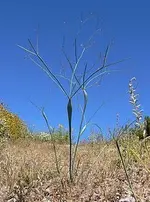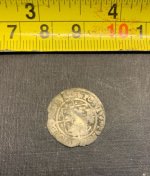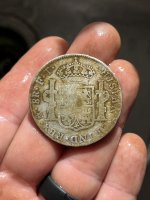GEOBOTANICAL PROSPECTING
The application of this discipline can be traced back to the 5th Century BCE and China; it may well be older and its use may also have been more widespread. The topic is introduced by Robert Temple in his 1986 publication The Genius of China as follows:
The Chinese were the first people to notice and use the connection between the types of vegetation which grow in certain areas and the minerals to be found underground at the same localities. The use of botanical observation in this way to find minerals is known as geobotanical prospecting.
In modern times insufficient attention has been paid to this practice, and many of the ancient Chinese findings have not been investigated. There are, however, some widely recognized examples of plants which grow in soil too rich in certain minerals to be tolerated by other plants. There is, for instance, a wild pansy (Viola calarninaria) which is zinc-loving, one per cent of its ash constituting zinc. Even more zinc-loving is the pennycress (Thlaspi), 16 per cent of whose ash can constitute zinc. The tragacanth (source of gum tragacanth, once widely used in pharmacy) is quite insensitive to selenium in the soil, which poisons other plants. A particular type of alyssum (Alyssum bertoloni) is highly tolerant to nickel, and is a classic indicator of that metal's presence. A particular type of grass (Panicurn crusgalli) indicates lead in the soil. There are several plants which indicate copper, and so on.
The oldest traces of this knowledge in China would seem to go back several centuries Be; but it is first found, substantiated by texts, in the third century m;. A curious ancient book called The Classic of Mountains and Rivers, made up of material from between 600 BC and 100 BC, mentions that the plant hui-t'ang grows near gold ore. This plant cannot be identified with certainty; it could be a type of orchid, basil, hawthorn, or wild pear or plum, all of which have names somewhat similar to this archaic one.
The origins of geobotanical prospecting in China go back to the preoccupation with the nature of different types of soil and their suitability for crops. By at least the fifth century m:, geobotany was in lull swing, as testified by the treatise 'The Tribute of Yu' of that date. This text describes the natures of the soils in the different regions of China in terms which Needham has recently been able to demonstrate are technical to a degree not previously appreciated. It is therefore safe to assume that, although the primary interest was agricultural, geobotany was beginning by that time to be used for prospecting as well. However, for the whole of Chinese history we are short of texts actually giving accounts of prospecting by these methods. Possibly the reason was secrecy. But it is also probable that such accounts as do survive still await discovery and are to be found in the thousands of old regional histories and gazetteers which have not [p.160] yet been studied with any thoroughness by either Western or Chinese scholars.
The Book of Master Wen, compiled about 380 AD but containing material of the third century BC, says that in areas where jade is found, tree branches tend to droop. It is clear that the Chinese noticed not merely the occurrences of certain plants, but their physiological condition, with relation to mineral deposits. In the first half of the sixth century AD there were at least three manuals devoted entirely to systematic accounts of geobotanical mineral prospecting, and listing the varieties of plants and their associated minerals. One of these, Illustrated Mirror of the Earth, says: 'If the stalk of [a certain] plant is yellow and elegant, copper will be found below.' It also says: 'If the leaves of [a certain] plant are green, and the stalks red, much lead will be found below.'
The early scientist and poet Chang Hua noted about 290 AD. that 'where the smartweed grows abundantly, there must be plenty of haematite [ferric oxide] below.' And about 800 AD Tuan Ch'eng-Shih in his Miscellany of the Yu-Yang Mountain Cave, wrote: 'When in the mountains there is a ciboule onion, then below silver will be found. When in the mountains there is the hsiai plant [a kind of shallot], then below gold will be found. When in the mountains there is the ginger plant, then below copper and tin will be found.'
None of the above signs has ever been tested in modern times, and there is scope for research in this field. Definite awareness that mineral trace elements actually occurred in and could be extracted from certain plants is seen in the year 1421 in a book called Precious Secrets of the Realm of the Keng and Hsin (symbols of metals and minerals). There we are told quite specifically that gold occurs in the rape turnip, silver in a type of weeping willow, lead and tin in mugwort, chestnut, barley, and wheat, and copper in the Indian sorrel (Oxalis corniculata). (Robert Temple, The Genius of China, Simon & Schuster, New York, 1986:159)
Even without factoring in more obvious finds associated with placer mining in the Pacific Northwest the possibility that mineral-rich areas could have been detected by geobotanical techniques can hardly be ruled out in the present context. But perhaps it is copper rather than gold that assumes greater importance. Here the complexities of the Copper Trade intrude on an already controversial hypothesis, yet there can be little doubt about the antiquity of the subject, or its extension into the Pacific Northwest. It is perhaps not that well known just how pure some of the copper deposits from certain areas of North America were - so pure in fact that they could be directly hammered into sheets. As for the Northern Regions, names such as Coppermine in the Central Arctic and the Copper River in southwest Alaska are common-place, while the Canadian Shield is again recognized for both its variety and its mineral richness - not merely copper, but Gold, Silver, Tin, Lead and Zinc. Here access could feasibly have been via Hudson Bay rivers (e.g., the Churchill, Nelson, Severn and Winisk) and/or the Great Lakes to the south, where further complexities concerning diffusion and the Copper Trade arise.
As for the "Copper Trade" in our present context, that takes on entirely new dimensions in the Pacific Northwest - primarily as an indicator of wealth in a land of plenty, e.g., in the form of copper plaques ("Coppers") that may have had more than this singular usage if their antiquity and origins are taken into account.
Temple, Robert. The Genius of China, Simon & Schuster, New York 1986.
SOURCE: http://www.spirasolaris.ca/sbb4g1bv3.html
The application of this discipline can be traced back to the 5th Century BCE and China; it may well be older and its use may also have been more widespread. The topic is introduced by Robert Temple in his 1986 publication The Genius of China as follows:
The Chinese were the first people to notice and use the connection between the types of vegetation which grow in certain areas and the minerals to be found underground at the same localities. The use of botanical observation in this way to find minerals is known as geobotanical prospecting.
In modern times insufficient attention has been paid to this practice, and many of the ancient Chinese findings have not been investigated. There are, however, some widely recognized examples of plants which grow in soil too rich in certain minerals to be tolerated by other plants. There is, for instance, a wild pansy (Viola calarninaria) which is zinc-loving, one per cent of its ash constituting zinc. Even more zinc-loving is the pennycress (Thlaspi), 16 per cent of whose ash can constitute zinc. The tragacanth (source of gum tragacanth, once widely used in pharmacy) is quite insensitive to selenium in the soil, which poisons other plants. A particular type of alyssum (Alyssum bertoloni) is highly tolerant to nickel, and is a classic indicator of that metal's presence. A particular type of grass (Panicurn crusgalli) indicates lead in the soil. There are several plants which indicate copper, and so on.
The oldest traces of this knowledge in China would seem to go back several centuries Be; but it is first found, substantiated by texts, in the third century m;. A curious ancient book called The Classic of Mountains and Rivers, made up of material from between 600 BC and 100 BC, mentions that the plant hui-t'ang grows near gold ore. This plant cannot be identified with certainty; it could be a type of orchid, basil, hawthorn, or wild pear or plum, all of which have names somewhat similar to this archaic one.
The origins of geobotanical prospecting in China go back to the preoccupation with the nature of different types of soil and their suitability for crops. By at least the fifth century m:, geobotany was in lull swing, as testified by the treatise 'The Tribute of Yu' of that date. This text describes the natures of the soils in the different regions of China in terms which Needham has recently been able to demonstrate are technical to a degree not previously appreciated. It is therefore safe to assume that, although the primary interest was agricultural, geobotany was beginning by that time to be used for prospecting as well. However, for the whole of Chinese history we are short of texts actually giving accounts of prospecting by these methods. Possibly the reason was secrecy. But it is also probable that such accounts as do survive still await discovery and are to be found in the thousands of old regional histories and gazetteers which have not [p.160] yet been studied with any thoroughness by either Western or Chinese scholars.
The Book of Master Wen, compiled about 380 AD but containing material of the third century BC, says that in areas where jade is found, tree branches tend to droop. It is clear that the Chinese noticed not merely the occurrences of certain plants, but their physiological condition, with relation to mineral deposits. In the first half of the sixth century AD there were at least three manuals devoted entirely to systematic accounts of geobotanical mineral prospecting, and listing the varieties of plants and their associated minerals. One of these, Illustrated Mirror of the Earth, says: 'If the stalk of [a certain] plant is yellow and elegant, copper will be found below.' It also says: 'If the leaves of [a certain] plant are green, and the stalks red, much lead will be found below.'
The early scientist and poet Chang Hua noted about 290 AD. that 'where the smartweed grows abundantly, there must be plenty of haematite [ferric oxide] below.' And about 800 AD Tuan Ch'eng-Shih in his Miscellany of the Yu-Yang Mountain Cave, wrote: 'When in the mountains there is a ciboule onion, then below silver will be found. When in the mountains there is the hsiai plant [a kind of shallot], then below gold will be found. When in the mountains there is the ginger plant, then below copper and tin will be found.'
None of the above signs has ever been tested in modern times, and there is scope for research in this field. Definite awareness that mineral trace elements actually occurred in and could be extracted from certain plants is seen in the year 1421 in a book called Precious Secrets of the Realm of the Keng and Hsin (symbols of metals and minerals). There we are told quite specifically that gold occurs in the rape turnip, silver in a type of weeping willow, lead and tin in mugwort, chestnut, barley, and wheat, and copper in the Indian sorrel (Oxalis corniculata). (Robert Temple, The Genius of China, Simon & Schuster, New York, 1986:159)
Even without factoring in more obvious finds associated with placer mining in the Pacific Northwest the possibility that mineral-rich areas could have been detected by geobotanical techniques can hardly be ruled out in the present context. But perhaps it is copper rather than gold that assumes greater importance. Here the complexities of the Copper Trade intrude on an already controversial hypothesis, yet there can be little doubt about the antiquity of the subject, or its extension into the Pacific Northwest. It is perhaps not that well known just how pure some of the copper deposits from certain areas of North America were - so pure in fact that they could be directly hammered into sheets. As for the Northern Regions, names such as Coppermine in the Central Arctic and the Copper River in southwest Alaska are common-place, while the Canadian Shield is again recognized for both its variety and its mineral richness - not merely copper, but Gold, Silver, Tin, Lead and Zinc. Here access could feasibly have been via Hudson Bay rivers (e.g., the Churchill, Nelson, Severn and Winisk) and/or the Great Lakes to the south, where further complexities concerning diffusion and the Copper Trade arise.
As for the "Copper Trade" in our present context, that takes on entirely new dimensions in the Pacific Northwest - primarily as an indicator of wealth in a land of plenty, e.g., in the form of copper plaques ("Coppers") that may have had more than this singular usage if their antiquity and origins are taken into account.
Temple, Robert. The Genius of China, Simon & Schuster, New York 1986.
SOURCE: http://www.spirasolaris.ca/sbb4g1bv3.html





